Are you struggling to find the right tennis string tension for your racket? Do you feel like your shots lack power or control, no matter how hard you try? You’re not alone. Many tennis players face this problem, unsure of how string tension affects their game.
Imagine stepping onto the court, feeling confident in your skills, only to have your shots go wild or fall short. It’s frustrating, isn’t it? Your racket feels off, and you can’t seem to hit the sweet spot. You might even start to doubt your abilities, wondering if you’ve lost your touch.
But here’s the good news: understanding and adjusting your tennis string tension can make a world of difference. The right tension can boost your power, improve your control, and help you play your best game. It’s like finding the perfect fit for your favorite shoes – when it’s right, everything just clicks.
In this blog post, we’ll dive into the world of tennis string tension. We’ll explore what it is, how it works, and most importantly, how to find the perfect tension for your playing style. Whether you’re a beginner or a seasoned player, you’ll learn valuable tips to enhance your performance on the court. Get ready to take your tennis game to the next level!
Table of Contents
What Is Tennis String Tension?

Tennis string tension is all about how tight the strings are pulled in your racket. It’s measured in pounds (lbs) or kilograms (kg). Think of it like tuning a guitar – the tightness of the strings affects how the racket plays. Most tennis rackets have a suggested tension range, usually between 40 and 60 pounds. This range gives you room to find what feels best for your game1.
String tension is super important because it changes how your racket performs. It affects three main things: power, control, and feel. When you hit the ball, the strings stretch and then snap back. This action is what sends the ball flying across the court. The tension you choose can make your shots more powerful or give you better control. It even changes how the racket feels in your hand when you hit the ball1.
Choosing the right tension is like picking the perfect shoes for running. It’s personal and depends on how you play. Some players like their strings tight for more control, while others prefer looser strings for more power. As you get better at tennis, you might want to try different tensions to see what works best for you. Remember, there’s no one-size-fits-all answer. It’s all about finding what helps you play your best game1.
The Science Behind String Tension
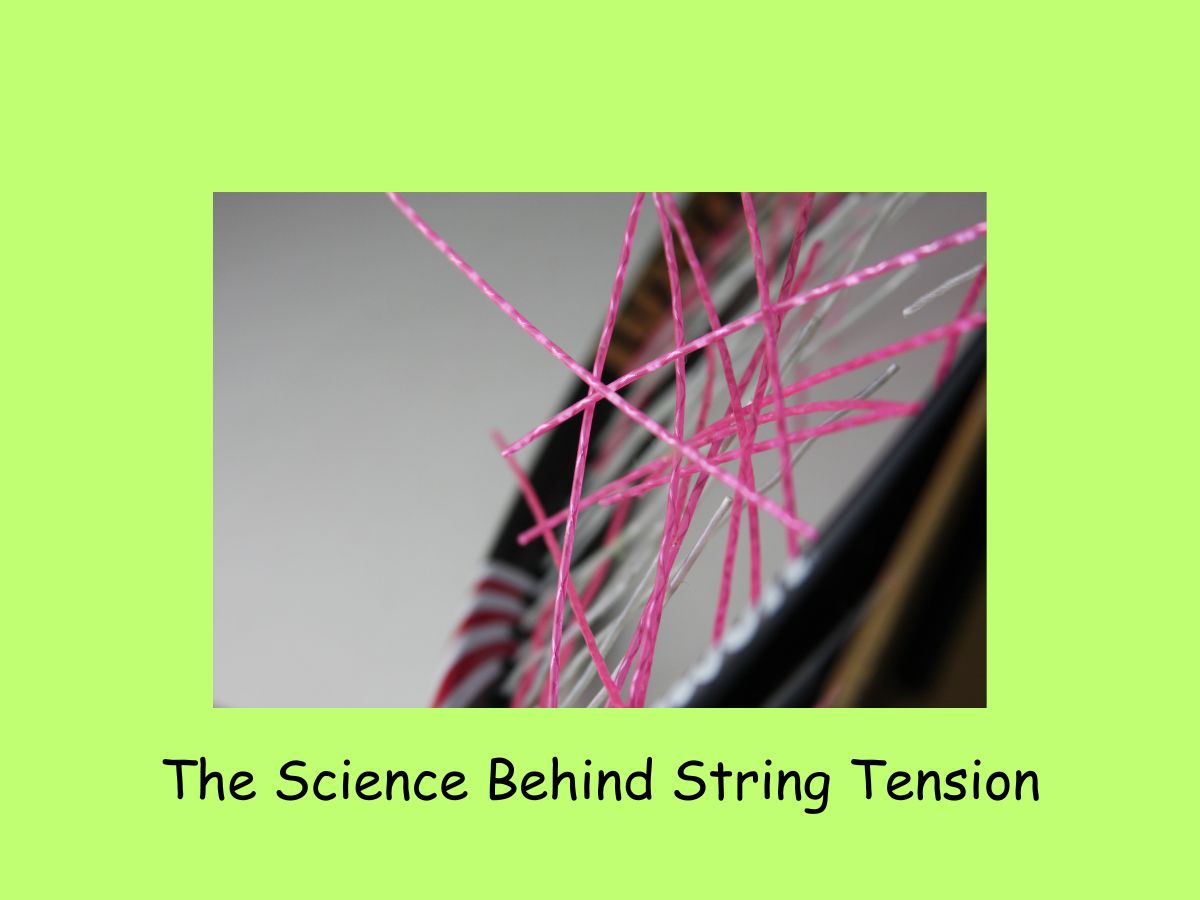
When you hit a tennis ball, something cool happens. It’s all about energy moving from your racket to the ball. This follows a rule in science called Hooke’s Law. This law says that when you stretch or squish something springy, like a rubber band, the force it pushes back with is directly related to how much you stretch it2.
In tennis, the strings in your racket act like springs. When a ball hits them, they stretch a bit and then bounce back. How much they stretch depends on how tight they are. Tighter strings stretch less and bounce back faster. This means more energy goes straight to the ball, making your shots faster and more precise. Looser strings stretch more, which can make your shots more powerful but harder to control2.
The way energy moves between your racket and the ball is super important. It’s all about finding the right balance. You want enough energy to make the ball go fast, but you also want to control where it goes. That’s why players experiment with different string tensions. They’re trying to find that sweet spot where they get the perfect mix of power and control. It’s like fine-tuning an instrument to get the best sound2.
Low vs. High Tension: Key Differences
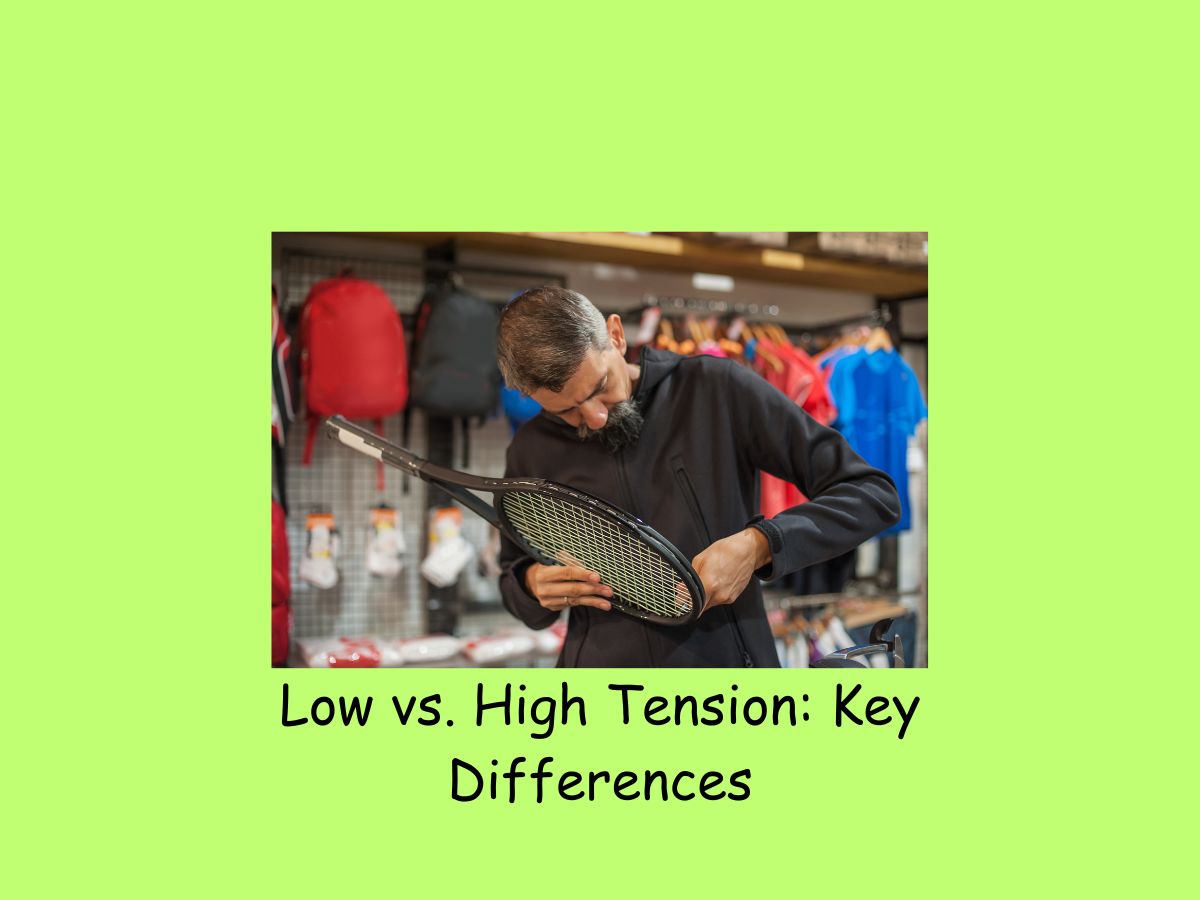
Let’s talk about the big differences between low and high string tension. Low tension is usually between 40 and 50 pounds. High tension is more like 55 to 60 pounds. These differences can really change how you play13.
Low tension strings are like a trampoline for the ball. They stretch more when you hit, giving you extra power. This is great if you want to hit the ball harder without using more effort. It’s also easier on your arm because the strings absorb more shock. Many young players or those still working on their strength prefer lower tension. It helps them get more depth on their shots without straining13.
High tension strings, on the other hand, are all about control. They don’t stretch as much, so the ball doesn’t stay on the strings as long. This means you can place your shots more precisely. It’s perfect for players who already hit hard and want more accuracy. High tension also helps with spin because the ball slides off the strings faster. But be careful – it can be harder on your arm and might lead to tennis elbow if you’re not used to it13.
How String Tension Affects Your Game
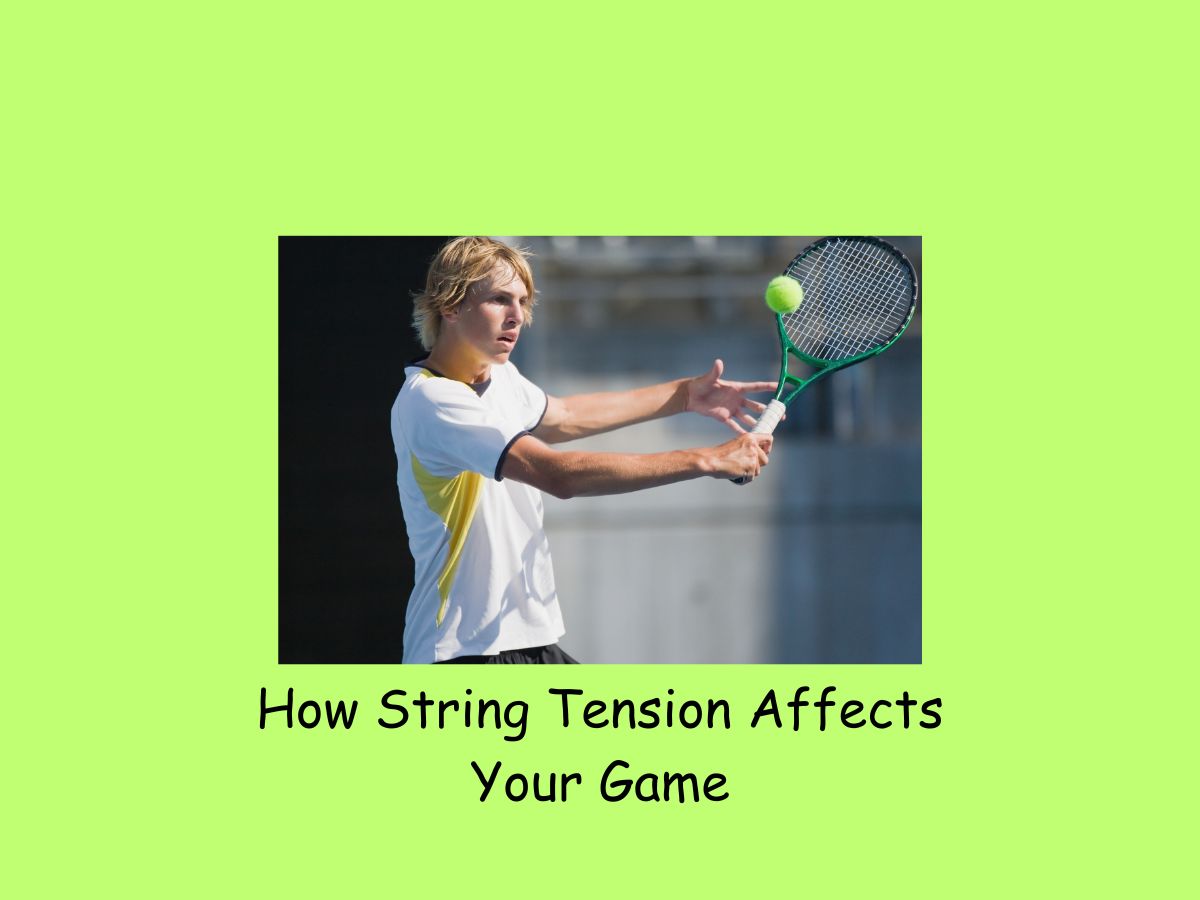
String tension plays a big role in how your tennis racket performs. It’s all about finding the right balance between power and control. Lower tension, usually around 50-55 pounds, makes the strings stretch more when you hit the ball. This gives you more power, like a trampoline effect. Your shots can go deeper into the court without you having to swing as hard. But there’s a trade-off – it can be harder to place your shots exactly where you want them.
Higher tension, typically between 55-65 pounds, does the opposite. The strings don’t move as much, giving you more control over where the ball goes. You can place your shots more accurately, which is great for precise play. However, you’ll need to put more effort into your swings to get the same power as lower tension strings. It’s also worth noting that higher tension can be a bit harder on your arm, potentially causing more strain.
String tension also affects how much spin you can put on the ball. Lower tension allows the strings to move more freely, which can help you create more spin. This is useful for players who like to hit with lots of topspin. Higher tension makes it a bit harder to generate spin, but some players prefer this for a more consistent feel when they hit the ball. In the end, the best tension for you depends on your playing style and what feels most comfortable14.
Finding Your Perfect Tension

Finding your ideal string tension is like trying on shoes – it’s all about what feels right for you. Start by looking at the recommended tension range printed on your racket. If you’re using synthetic gut, natural gut, or multifilament string, begin with the middle of this range. For polyester or kevlar strings, try stringing 2 pounds below the middle of the range. This gives you a good starting point2.
From there, it’s all about experimenting. If you want more power and comfort, try lowering your tension a bit. This will open up the sweet spot of your racket, making it easier to hit powerful shots. If you need more control and want to generate your own power, try increasing the tension slightly. Keep in mind that changes in tension can affect spin too, but it’s hard to predict exactly how without trying it yourself2.
Remember, there’s no one-size-fits-all answer. Your perfect tension depends on your playing style, physical strength, and personal preference. Don’t be afraid to try different tensions until you find what works best for you. It might take some time, but once you find your sweet spot, you’ll notice a big difference in your game. And if you’re using a hybrid setup with two different types of strings, you might want to string the polyester part about 5% looser than the softer string25.
Common Myths About String Tension
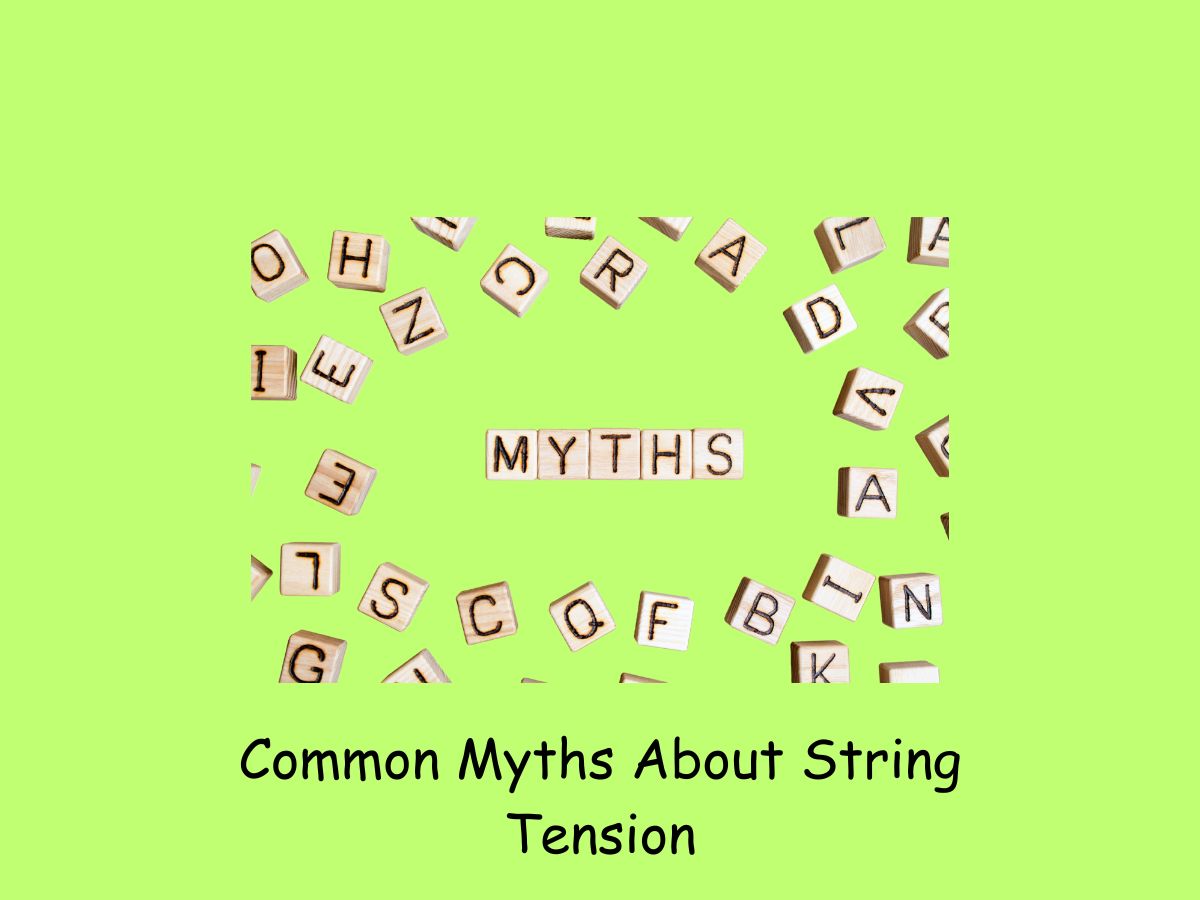
There are a lot of myths about string tension that can confuse players. Let’s clear up some of these misunderstandings. First, many people think that tighter strings always mean more control. While it’s true that higher tension can improve control, going too tight can actually make things worse. If the strings are too tight, the ball doesn’t stay on the strings long enough to generate good spin and grip3.
Another common myth is that looser strings always give you more power. Again, this isn’t always true. Very loose strings can actually reduce power because the ball bounces off too quickly without transferring energy well. It’s like trying to hit a baseball with a floppy pool noodle – you get a lot of movement, but not much power3.
Perhaps the biggest myth is that there’s one perfect tension for everyone. This simply isn’t true. The best tension varies from player to player, depending on things like playing style, skill level, and personal preference. It’s like finding the perfect pair of jeans – what works great for one person might not suit another at all. That’s why it’s so important to experiment and find what works best for you, rather than just copying what your favorite pro player uses36.
String Tension for Different Playing Styles
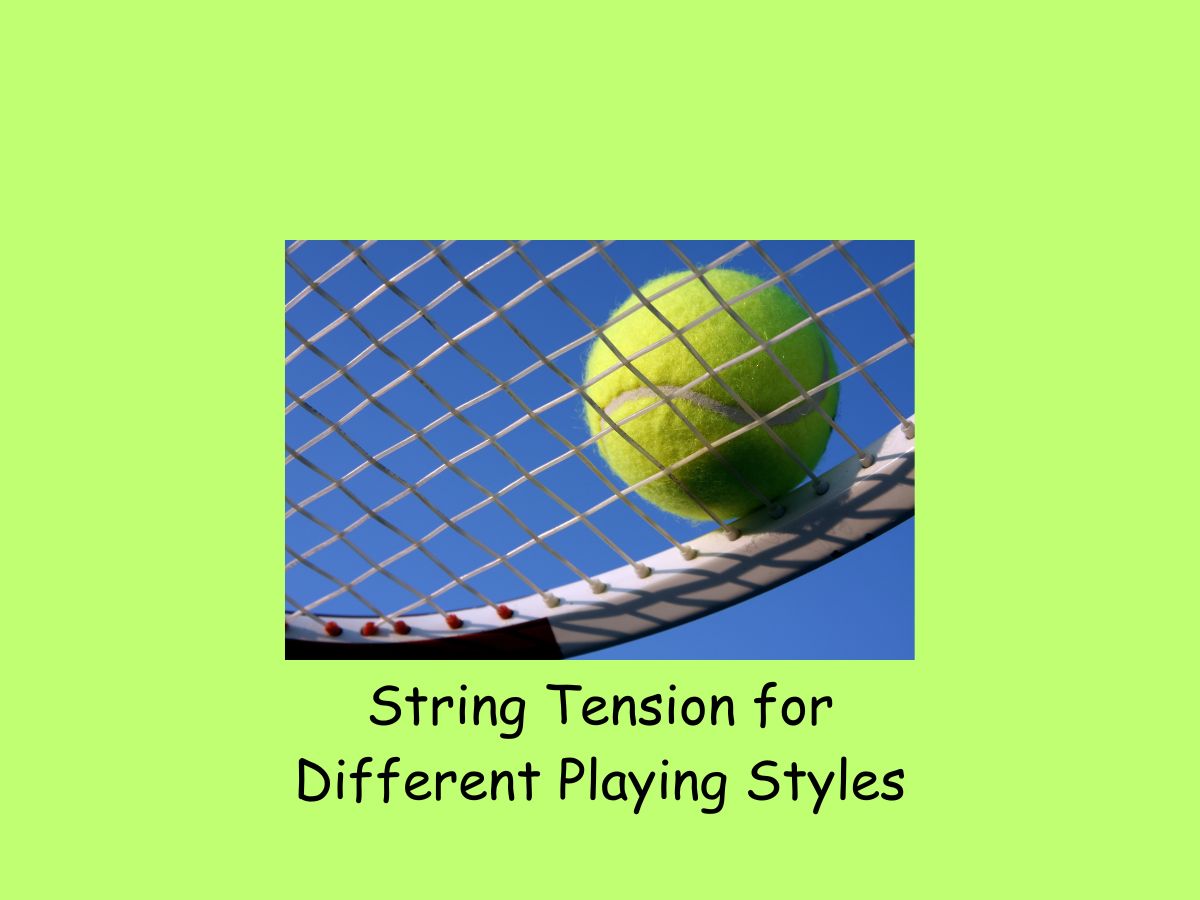
Different playing styles benefit from different string tensions. If you’re a power player who likes to hit hard from the baseline, you might prefer lower tension. This gives you more power without having to swing as hard. Lower tension, around 40-50 pounds, allows the strings to stretch more. This creates a trampoline effect, sending the ball flying with less effort from you.
For players who focus on control and precision, higher tension might be better. This usually means stringing between 55-65 pounds. Tighter strings don’t move as much when you hit the ball. This gives you more control over where your shots go. It’s great for players who like to place the ball exactly where they want it on the court.
All-court players, who mix up their game with both power and control shots, often choose a middle ground. Tensions between 50-60 pounds can offer a good balance. This range gives you some extra power when you need it, but still lets you control your shots well. Remember, these are just starting points. The best tension for you depends on how you play and what feels right to you.
Maintenance and Restringing Tips
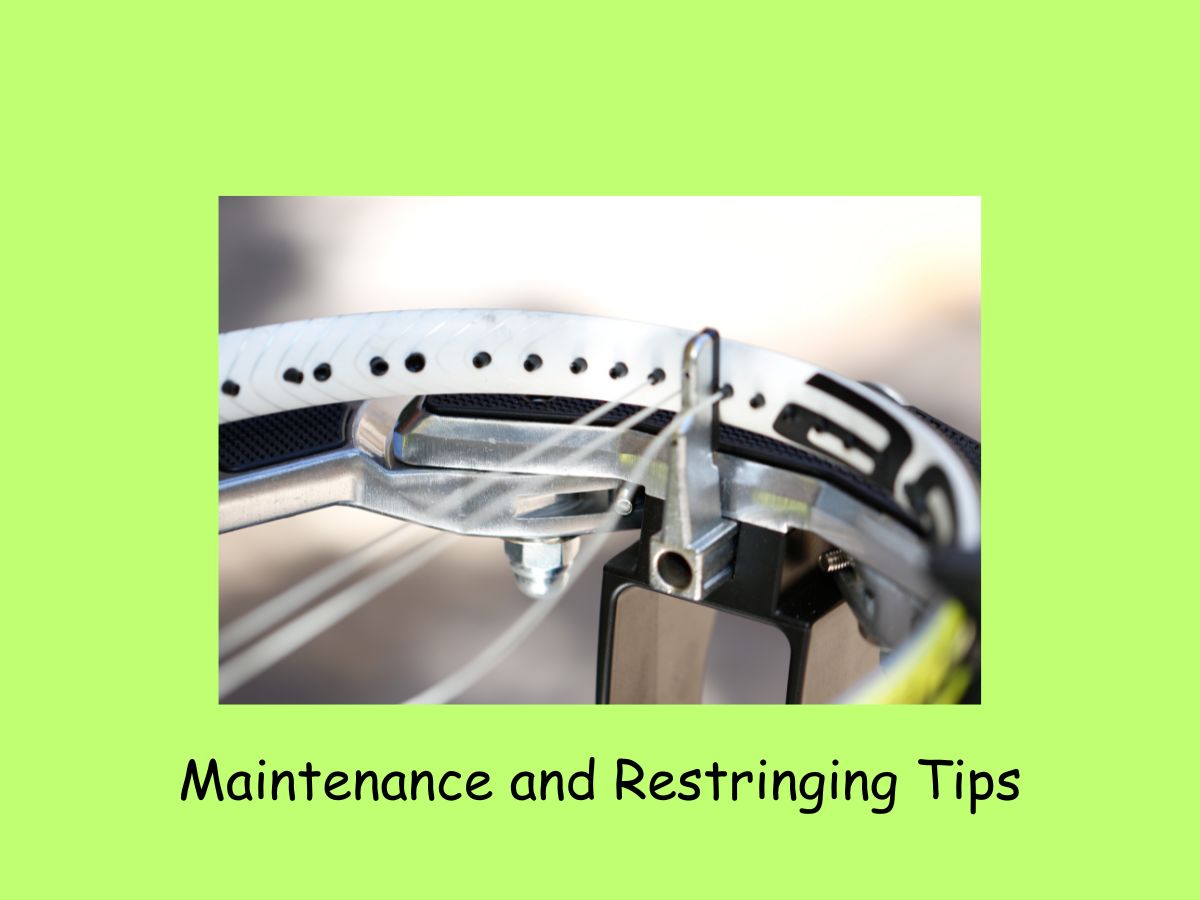
Taking care of your tennis racket strings is important for keeping your game strong. After each time you play, wipe down your strings with a damp cloth. This removes dirt and sweat that can wear down the strings faster. Be gentle with your racket too. Try not to hit the ground or the net with it, as this can damage the strings.
How often you should restring your racket depends on how much you play. A good rule of thumb is to restring as many times per year as you play per week. So if you play twice a week, aim to restring about twice a year. But if you’re a serious player, you might need to do it more often. Keep an eye on your strings. If they look frayed or feel loose, it’s probably time for new ones.
Different types of strings need different care. Synthetic gut, natural gut, and multifilament strings are more elastic. They usually last longer but might lose tension faster. Polyester strings are stiffer and keep their tension longer, but they can suddenly snap without warning. If you use a mix of string types (called a hybrid setup), you might need to replace the softer string more often. Remember, fresh strings can make a big difference in how well you play, so don’t wait too long between restrings.
Experimenting with Tension: A Step-by-Step Guide
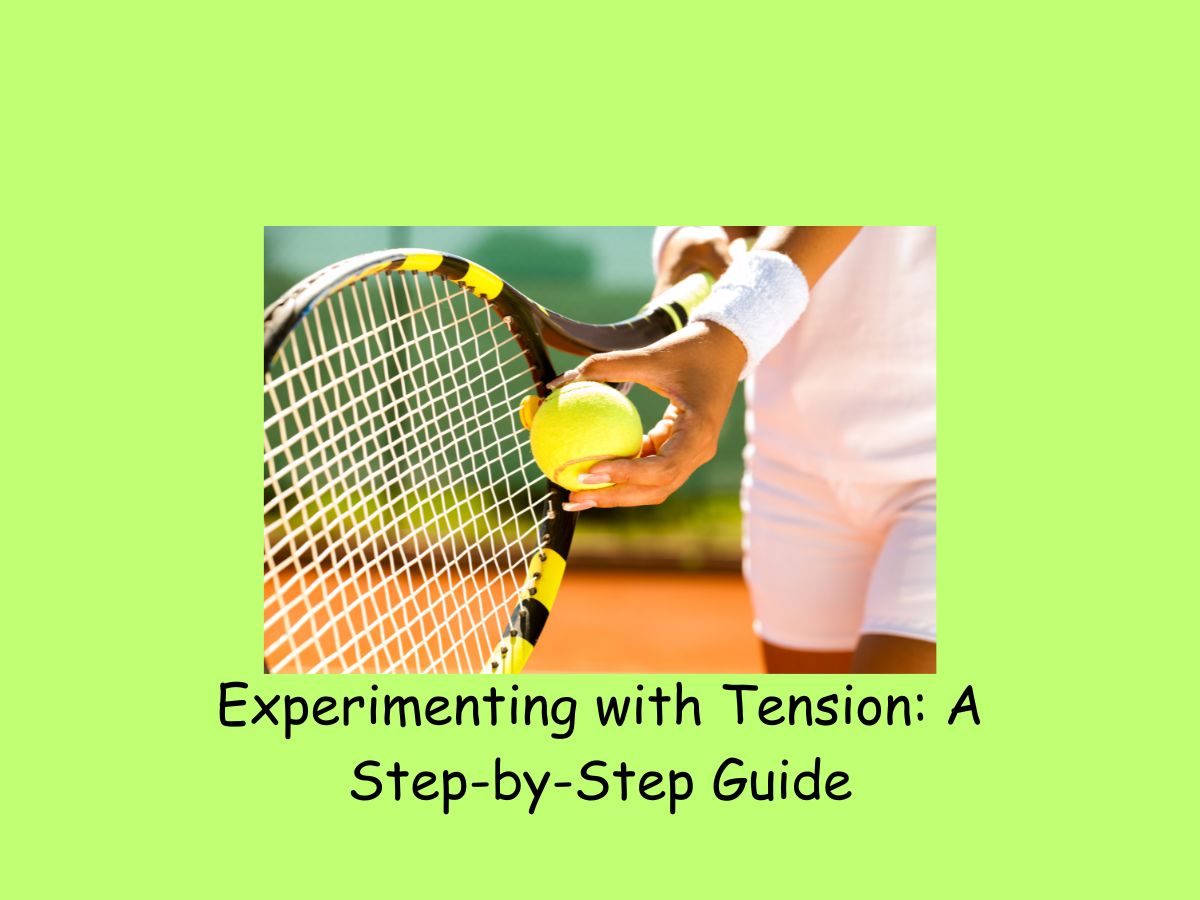
Finding your perfect string tension takes some trial and error. Here’s a simple guide to help you experiment. Start by looking at the recommended tension range on your racket. If you’re using synthetic gut or multifilament strings, begin with the middle of this range. For polyester strings, start about 2 pounds below the middle.
After you’ve played with this tension, think about how it felt. Did the ball fly off your strings too fast? You might need higher tension. Was it hard to get power in your shots? Try lowering the tension a bit. Make small changes, about 2-3 pounds at a time. This way, you can feel the difference without making a drastic change.
Keep a record of the tensions you try and how they felt. Write down things like how much control you had, how powerful your shots were, and if your arm felt comfortable. Try each new tension for at least a few matches to really get a feel for it. Don’t be afraid to ask your stringer for advice too. They often have good tips based on your playing style. Remember, the goal is to find a tension that makes you feel confident and comfortable on the court.
Conclusion
So, now you know a lot more about tennis string tension! It might seem like a lot to think about, but trust me, it’s worth it. Mess around with different tensions on your racket. See how it changes your power, control, and how your arm feels.
Don’t be scared to try new things. What works for your friend might not work for you, and that’s totally okay. Tennis is all about figuring out what makes you play your best. Keep practicing, keep trying new tensions, and most of all, have fun out there on the court!
If you have more questions or just want to chat about tennis, feel free to email me at jaiden@jaidensmedia.com. I’m always happy to help!
FAQs
What is tennis string tension?
String tension is how tight the strings are on your tennis racket. It’s measured in pounds (lbs).
Why is string tension important?
It affects how much power and control you have when you hit the ball.
What’s the difference between low and high string tension?
Low tension gives you more power, while high tension gives you more control.
What tension should I start with?
Look at the recommended range on your racket and start in the middle. If you use polyester strings, start a little lower.
How do I know if my tension is too high?
If it’s hard to hit the ball deep and your arm hurts, the tension might be too high.
How do I know if my tension is too low?
If the ball is flying all over the place and you can’t control it, the tension might be too low.
How often should I restring my racket?
A good rule is to restring as many times a year as you play per week. If you play twice a week, restring twice a year.
Does the weather affect my string tension?
Yes, hot weather can make your strings looser, while cold weather can make them tighter.
What if I have different types of strings on my racket?
This is called a hybrid setup. You might need to change the softer string more often.
Can changing my string tension really make a difference?
Absolutely! Finding the right tension can help you play your best tennis.
